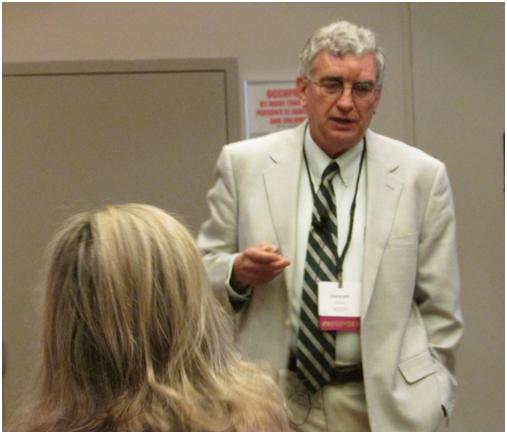Enterprise Risk Management – Chicago Symposium – Highlights.
Day One – ERM Pre Seminar – Forecasting Extreme Events
Professor Guntram is really upset at Nassim Taleb. Nassim’s logic has never been perfect but he speaks from his heart as a practitioner. I can relate to the challenges he raises as a practitioner and I loved the first book he wrote in anger, Fooled by Randomness.
I follow Nassim’s and respect him a great deal but I also liked the alternate criticism presented by Professor Guntram. I think Nassim’s abruptness and his tendency to write off academics has rubbed them the wrong way all across the world and Dr. Guntram was no exception.
When you hear him speak you may feel that he may be coming from a different side but despite his many criticism he made some points very similar to what Nassim makes.
a) Study the change process to forecast the future – Nassim calls it the generator function.
b) Focus on the context and the environment to build an intuition – Nassim suggests you study prices and changes that impact prices
c) You need multi dimensional exposure and experience to become a strong analyst – Nassim requires you to read and explore beyond your narrow focus.
d) You need to bring multiple perspectives together to get a grip on forecasting future – Nassim talks about the tunnel vision we develop while living in the same environment and our inability to see the bigger trend.
e) Pick your battles and your tools – ala Nate Silver – Nassim recommends that you remember that just because you have a hammer in your hand, the world is not entirely made up of nails.
Having said that the biggest disagreement between the two was Nassim’s thesis that suggest that you cannot forecast the future and the only way to prepare yourself is through resilience. While Dr. Guntram suggests that under the right conditions and the right tools you can predict it and analysts in the past have done it once too often for that ability to be written off completely.
Dr. Gungram philosophical ground work was obviously much more stronger and well documented and in this department atleast Nassim predictably fell short.
For someone who spends most of his time with data and models, the 6 hours we spent listening to the philosophy of change and analysis was an interesting experience. Just like taking a class on philosophy. I now understand why a kiss and make up session between the broad academic world and Nassim is not going to happen anytime soon. Pity since they both can learn a bit from each other.
Catching up with Dave Ingram and Regulatory Complexity
The highlight of day however was catching up with Dave Ingram for a bite and then hearing him speak at the fighting complexity with complexity sessions the next day. Like Gary Travnicek and George, Dave and I met online many years ago and have spoken on and off to each other about risk. This was our first meeting in the real world and we really enjoyed our chat. Over fish and sea food we spoke about who is smarter and more effective. ERM functions within banking or insurance industry and why the industry may actually have an edge.
Alan Mendelowitz, James Allen and Dave Ingram together ran a brilliant discussion on regulatory complexity and the many challenges faced by ERM functions as well as the banking regulators. Just these two sessions by themselves would have been worth the entire two day affair.
Here are the biggest takeaways from their session:
a) If you don’t have the right policy framework, your tactical responses to crises will always be disastrous.
b) You can’t predict the next crisis since it will be driven by very different risk factors. We will not be prepared because regulators prepare for the next crisis by looking at the previous one.
c) A policy frame work must answer the basic question – how should regulation protect and how?
d) In an ideal world regulators, business owners, shareholders and managers should be able to look and use the same data and reach the same conclusions. They should be able to pick this data directly from the feeds that allow them to run the business.
e) In the regulatory filing world, regulators and businesses agree to share information in formats that have nothing to do with running the business. It’s expensive and ultimately of no use since the primary conflict revolves around what information should be shared and its cost rather than what that information could be used for.
f) Between free enterprise, risk and regulation, free enterprise will always dominate regulation. You just can’t fight that.
g) The frameworks and mindset used by the regulator are driven by the people who are hired to run these functions. Lawyers are focused on enforcement. They are not good at data and they are not good analysis. This role is filled by the buy side analysts who are responsible for cracking the code hidden in SEC disclosures.
h) Did de-regulation really benefit the economy? Yes corporate profits went up over the last four decades but we just gave all them back to the banking industry in the last four years. Who won?
i) You can either believe the rating agencies or you can believe the market, you can’t do both.



